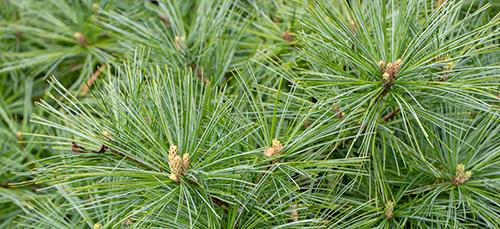
White Pine
White pines (Pinus strobus) are native trees well known for their distinctive needle-like leaves. They can grow as high as 70 to 90 ft and are common in temperate and broadleaf forests of North and Northeast America. These coniferous trees are popular ornamental trees, especially during the Christmas seasons. In fact, they are the best-selling live Christmas trees in America for the season. White pines are valuable with their fluffy leaves and evergreen foliage. They also bear decorative pine cones that never miss the tree for the holiday decorations.
But aside from their aesthetic appeal, white pine is also a source of food and medicine. It is esteemed in the Native American tradition with its usefulness during winter starvation. The young staminate cones are edible and are marketed today as pine nuts. Its inner bark also produces starch for flour-making. Presently, white pines are mostly cultivated for their decorative purpose and their timber. They have a soft and even grain of white wood that is valued for frame and furniture-making.
The History Of White Pine
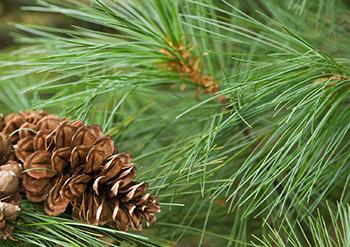
White pine has such a deep root and prominence in history. In the last Ice Age, they thrived in the forests of Southern Canada and North Carolina. Sometime in the late 1700s, European explorers discovered the species in Minnesota. During the onslaught of winter starvation, the Native Americans settle on eating their inner bark because of food scarcity. It also became a traditional remedy for wounds and respiratory problems like a cough and colds.
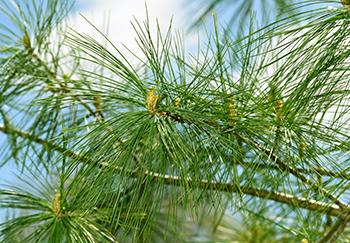
The European settlers soon used the tree for shipbuilding. These dominant trees provide an endless supply of lumber for shipbuilding. As the story goes, the white pine tree became the venue of the Five Nation for peace talk amidst the brewing war. They considered the five clusters of needles a symbol of unity as they stood under the shade of the towering pine tree. Thus, the white pine is valued as the Peace Tree.
White pine also plays a symbolic role in some of today’s countries. In Ontario, Canada, the Eastern white pine is revered as the provincial tree. It is also the State Tree of Michigan and Maine, and its pine cone is the State Flower of the latter. The white pine also holds a symbolic significance in the badges in Vermont.
Where This Plant Is Found
White pine trees come from the genus Pinus, which means pine; and strobus refers to its resinous cones. These conifers are native to the forests of North America and are abundant in Manitoba, Newfoundland, and Georgia. They are also widespread in Iowa, particularly in the extreme northeast.
White pine can also survive anywhere where the climate is humid and cool. Thus, it is often cultivated for ornamental purposes, becoming live Christmas trees when the season rolls in. It also becomes a common tree for residential and public area landscaping because of its lovely evergreen foliage.
Related: The Complete Map of Edible Plants: Find Out What You Have in Your Area! (Video)
How To Identify White Pine
White pine is easily identifiable by its needle-like leaves and pine cones. These leaves range from green to a bluish-green color that occurs in bundles of five by the branch. The tree will grow at about 50 to 90 ft depending on its location. It tends to grow straight upward with light gray bark that grows darker as the tree matures.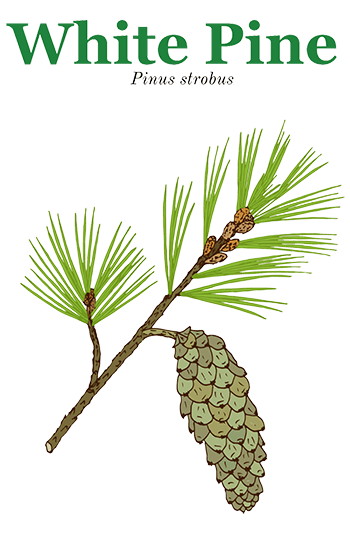
- Leaf. The stiff and pointed needle leaves of white pine grow at around 3 to 5 inches long. They grow in bundles of five called fascicles. They start from the base with a whitish appearance that increases into a green to bluish-green hue at the tip. White pine leaves can turn brown and fall off after two years.
- Flower. White pine flowers or cones bloom every autumn. It is monoecious, meaning it can grow both male and female flowers, distinguished by their colors. Male flowers are yellow in color and cylindrical in shape. They appear near the end of the branches where new leaves are growing. The female flowers are light green with a red tinge and are usually situated at the top part of the tree.
- Roots. White pines have a big and sturdy root system that spreads out on the surface like many other trees. They have a taproot system that grows vertically. Its thick, coarse root grows deep into the soil while the finer ones thrive on the surface. The length of the root is dependent on the water and oxygen availability. Some white pine roots can reach down to 75 feet deep into the ground.

- Trunk. The roundish stem of young white pine will develop into a tree trunk that can measure up to 4 ft in diameter. The bark that covers it is often light gray to reddish-brown. These barks are fissured with deep indents and ridges that flake off over time. Young white pine trees are rapidly growing when young and slow down as they mature.
- Seeds. The cylindrical pine coneflowers will turn brown once they mature. Each cone will produce two reddish-brown seeds. These seeds are small and winged and are easily carried off by the wind when the cone sheds them off.
Related: Plant Identification Guide – 400 Wild Plants That You Can Forage For (Video)
Here are the common varieties of white pine:
- Pinus strobus Nana group: These are the dwarf and mounded varieties of the white pine and the best for garden landscape. Pruning and shearing can control its growth, making them the best hedges for the garden.
- Pinus strobus Macopin: They are the species native to Maine and Michigan, which are also best considered for the garden. They have silvery blue-green leaves and can grow up to 80 ft in cultivation which you can control through pruning.
- Paul Waxman: It is a dwarf evergreen that is best for foundation planting and rock gardens. It has slow growth and unusually shorter leaves.
How To Grow White Pine
Growing white pine is quite tricky and the climate and temperature play a big role. The tree thrives better in rich, moist, but slightly acidic soil. It tolerates the full sun in cool climates but also needs some shade in warmer regions. But once the tree has established itself, it is fairly easy for it to grow to its appropriate size in its conducive environment. White pine is ideal for wide and open spaces granting its lofty height as it grows. But, there are also dwarf cultivars that can be trained as hedges or bonsai that are ideal for small gardens.
Related: How to Make A Self-Sufficient Backyard on 1/4 of an Acre (Video)
White pine needs a cool and humid environment to survive. It is also ideally planted in a wide garden. You can easily grow it from seeds that are harvested from mature cones.
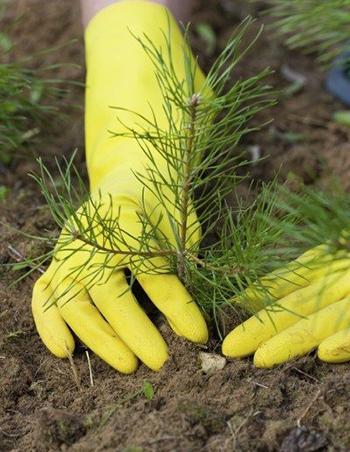
The young saplings can be planted in rows for an excellent garden hedge and edging. However, germination time may take some time before the sprout can come out, sometimes up to six weeks.
You can choose the best seed by allowing it to float in a bucket of water overnight. Those that sank are the ideal seeds for propagation. Put these seeds in the freezer bag, keeping them moist for two to three months. You may use perlite to keep them moistened.
After the cold stratification process, you can sow them at only one seed per container. Make a 3/4-inch hole in the potting mix and cover it loosely, preferably with sphagnum moss and cover the layer with sand. Allow the seeds to germinate and transplant them when the growth reaches 2 inches.
The basic requirements of white pines are:
- At least 4 hours of sunlight; you can provide shade in a hot climate.
- A rich, well-drained, cool, and slightly acidic soil.
- About 1-inch of water weekly. Young saplings need to be well-watered, but established ones need dry yet cool soil.
- High-acid fertilizer specifically formulated for evergreens during spring.
How To Harvest White Pine
Pine cones are not the only useful part of the white pine that you can harvest. You can also gather the leaves for various medicinal uses. But, gathering the leaves also depends on the purpose of use. Fresh leaves are ideal for making tea and decoctions. Dry leaves will do, but they are more useful for mulching and fire-starting.
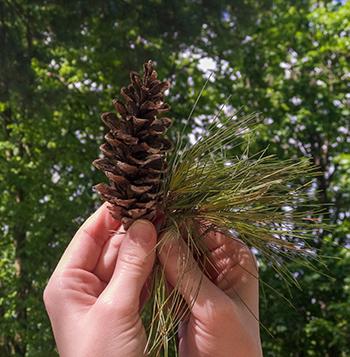
For teas and infusions, you can snip fresh leaves off the branches and cut them into smaller pieces. However, you may also leave them in a cluster if you wish. While fresh leaves are more potent, you may also preserve and use dry leaves for your infusion. Before storing white pine leaves, wash them in warm, soapy water and rinse thoroughly. Sundry them in a towel and store them in a cool place for future uses.
If harvesting for white pine seeds, you don’t need to go as far as foraging fallen cones. White pine seeds are available usually in late summer when the cones have dried out and the scales are already lifting. You can store the cones in a dry paper bag until they burst open and drop their seeds.
Related: American Beech Nuts – A Staple At The Grocery Store 100 Years Ago (Video)
What White Pine Is Good For And Natural Remedies Made From It
White pine comes with a lot of benefits not just as ornamental trees. Back when people experienced winter starvation, the natives would eat their barks to fend off hunger. And you still can today by cutting off a piece of the bark and munch on the white soft part.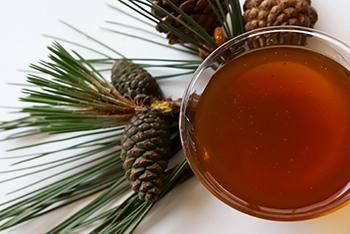
Pine trees are a good source of vitamins and nutrients such as vitamin C and fiber. It makes an excellent tea and infusion for sore throat and headache. It can also heal cough, bronchitis, and other chest congestions. You may also extract the sap from the inner bark for treatment of diarrhea, scurvy, and wound cleaning.
A decoction from white pine tar helps treat tapeworm infestation and also for treating dandruff.
What Parts of Plants Are Used for Remedies?
As a natural home remedy, the most popular part of the tree is its leaves and sprigs. It is boiled and steeped into a tonic for curing various respiratory illnesses. The bark and resin are also valuable for stomach and digestive problems. The pounded inner barks are useful for treating wounds and it is also used as a poultice for treating cough and colds.
White Pine Tea
Ingredients:
- 2 tbsp fresh white pine needles
- 1 cup water
- Lemon or honey (optional)
Steps:
- Gather fresh needles from the white pine tree. Wash in cold water and dry in a paper towel. Cut the needles and leave off the brown ends. You will need around 2 tbsp of the cut needles.

- In a small saucepan, boil 1 cup of water and remove from heat once boiling.

- Add the white pine needles to the hot water, and cover with a lid. Set aside and steep for 5 to 15 minutes depending on how strong you want the tea to be.

- Strain into a mug. Add lemon or honey to taste.

How to Use:
Drink the tea once per day or once every other day. Avoid overconsumption, and do not take it when pregnant or breastfeeding.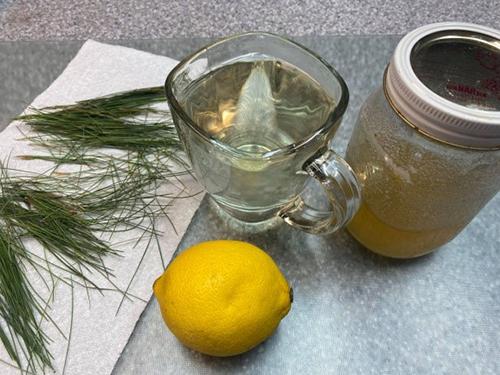
Related: Similar to Morphine: The Best Natural Painkiller that Grows in Your Backyard (Video)
What Plants Resemble White Pine
| Feature | White Pine (Pinus strobus) | Red Pine (Pinus resinosa) | Scotch Pines (Pinus sylvestris) |
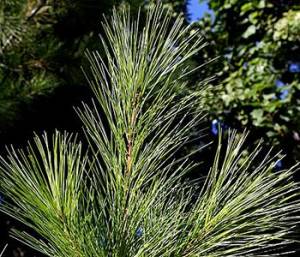 |
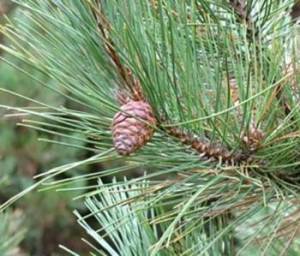 |
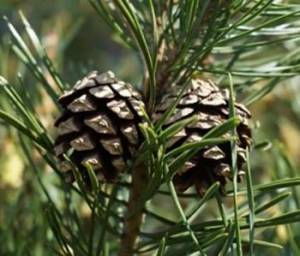 |
|
| Size | Height: 50 to 80 ft Width: 20 to 40 ft | Height: 90 to 100 ft Width: 30 to 40 ft | Height: up to 60 ft Width: about 40 ft |
| Leaves | Needle-like leaves in a bunch of 5; fluffy | Needle-like leaves in a bunch of 2’s; sparse | Needle-like leaves in a bunch of 2; alternating spiral |
| Flowers | Male flowers: Yellow in color; cylindrical Female flowers: Light-green with a red tinge | Male flowers: Light red; round Female flowers: Reddish-brown | Male flowers: yellow-orange cones Female flowers: red-purple that turns into yellow-green in early summer |
| Stem/Trunk | Dark-brown and blocky at the bottom that becomes gray and smooth upward | Uniformly reddish-brown and flaky | Reddish-brown at the bottom and bright orange at the top |
| Scent | Pleasant but very little aroma | Distinct resinous scent | Sweet and piney scent |
Warnings and Cautions
White pine trees are harmless. But when foraging for pines, remember to be cautious since not all pine trees are edible. Some species are toxic for both humans and animals and can cause fatal poisoning. These include the Norfolk Island Pine (Araucaria heterophylla), Yew trees (Taxus baccata and Taxus brevifolia), and Ponderosa or Western Yellow Pine (Pinus ponderosa). These pine trees can cause abortion and renal failure when ingested.
One of the identifying characteristics of poisonous pine is its sparse leaves that are not grouped in clusters. Some may also have stiff and dry leaves with a bright appearance. The Yew tree, for example, has stand-out bright green leaves and a faux pine cone that resembles the edible pine fruits.
The entire white pine tree is generally non-toxic and safe for use for a short period. However, consumption by pregnant women may cause miscarriage and low birth weight. Its toxic reactions are observed in both pregnant humans and animals.
Also, there is not enough study to back its safety in breastfeeding women. Thus, it is safe to avoid using white pine while nursing. When using any natural remedy, it is important to use any products in moderation. Remember that not all-natural products are safe if used beyond the correct dosing and consumption.
Pine pollen is also notorious for aggravating allergies and asthma. Even if you test negative for a pine skin test, pollens can still exacerbate allergic symptoms. The resin may also cause irritation on people with sensitive skin.
You may also like:
10 Things Cowboys Carried with Them in the Wild West to Survive (Video)
How to Identify the Ginkgo Biloba Tree: Does It Grow on Your Street?

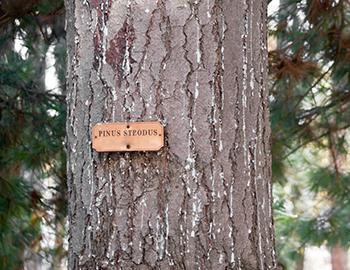
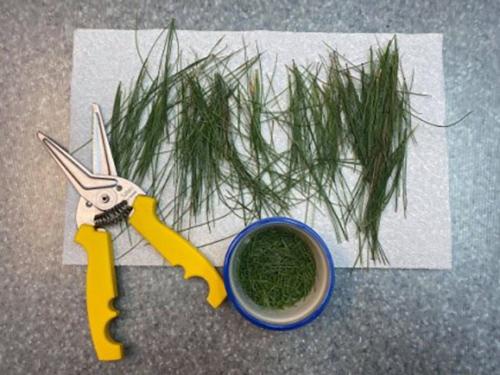
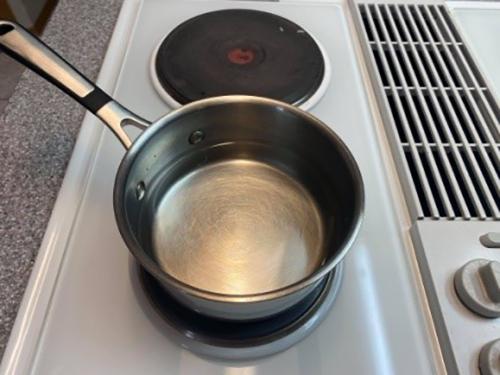
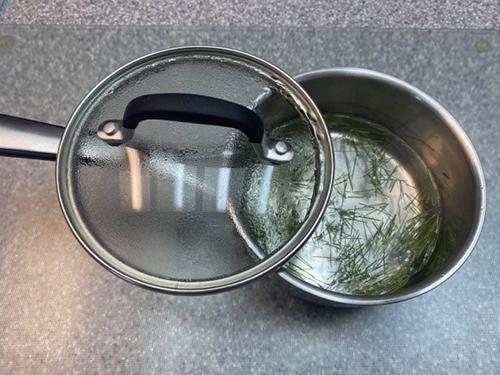
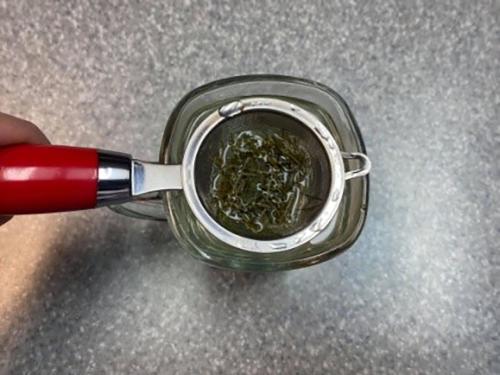

Hello I live in tampa Florida is the pine tree here edible
I have a beautiful white pine that has withstood so much. It’s my favorite tree. It went through storms, 2 tornados, early snow in October when many trees couldn’t withstand the weight, my sons car caught fire right beneath it which caused burning up one side of the tree. Now 20 years later the tree has recovered and thrived. So many people have wanted to cut this tree down, take off branches, etc. .. my husband has learned well…don’t dare touch my tree! I am it’s guardian for as long as I live. Thanks for all the info.
Hi Denise,
Thank you for sharing this with us.
This is such a wonderful story. Happy to hear that your tree recovered.
Many blessings and good health!
So the white pine is good, but the western yellow pine poisonous? DO THEY both grow in New England? I’m in MA. Anyone know how to tell them apart? Certainly don’t want to use the wrong one!!
How is the bark and resin used in aiding the stomach? How do you make the remedy? Will it help with ulcers? Thank you.
Ulcers are caused by the Pylora bacteria. If you have ulcers, you can get an anti bacteria medical treatment specifically for that bacteria, to get rid of them.
Ponderosa pine is a western species. The needles are in whorls of three. The eastern most range is parts of Nebraska and South Dakota. Western Yellow Pine is a synonym for Pinus Ponderosa.
I have white pine here in western Montana.
White pine is easy to pick out from other pines. It has 5 needle clusters, so if your cluster of needles is 5 that is White pine.
The White Pine that was this subject is Pinus Strobus, aka Eastern White Pine. There are 9 other North American White Pines but they are western species.
I’m being a botanist and fanatic. The picture of the sign on the tree trunk shows Pinus “Strodus” which is incorrect. Details drive me crazy. I’ll try to control myself. Love your posts, though!
Most Pinus species are edible and the best part is that they have antiviral compounds. During the 1918 flu epidemic, Native Americans in the Pacific NW were treating scurvy with pine needles and found that those patients did not catch the flu. A company in Canada collects Christmas trees after the holidays and extracts antivirals to sell to drug companies for use in flu remedies. These compounds are also effective against coronavirus. I’ve been drinking pine tea daily for over a year, just in case, and have stayed healthy. I have 3 species of pine on my property and they have slightly different flavors. I use the brown stems and male cone as well as the needles. I just rinse them off and cut them to size. One generous handful make 2 quarts of iced tea. It’s delicious.
Pine needles, especially white pine, are the second highest source of shikimic acid. And what is that? The base of tamiflu. No wonder it is so useful for that type of illness.
Where are white-pine seeds or seedlings available? In Japan where I live the only varieties of pine are black-pine and red-pine.
Anyone know a good source to order tincture or fresh white pine needles for tea?
https://freshpineneedletea.com/
I Have Ordered Many Times From This Place…EXCELLENT!!! They Pick Fresh Needles For Every Order & Ship Within 24 Hrs…They Also Have Free Shipping :))
Thank you for sharing this site
Not too long ago I heard a news report that White Pine should be planted because It cleans the impurities in the air. Question? Is this the same tree that drips resin all over my car?
LOL. probably.
Hello!
So, we should limit our consumption?
We really like it!
If we only put about a quarter cup in, muxed with black and green tea, but did this 4 times a day, that would keep consumption to about a cup a day
We have no health issues and take no meds, so, do you think that’s OK?
Thank you
I’m an avid tea drinker, but, a beginning forager, and I like to blend my teas. I’m looking forward to making some.
how many different pine trees in NH
I live in New Zealand and most of the pine trees here are pinus radiata, which have a different shaped cone to your pictures. Are these also edible?
https://greengoddess.co.nz/how-to-make-pine-needle-tea/
Paul, Radiata is fine to drink. Here is a link to local knowledge. Also check out Judy Mikovich for info re detox of vaxxines and to help autism.
What’s good for disc pain from your neck
you can do massage, you can do accupressure massage. Did it affect your arm?
If not use EX Bailao, or just use the left hand wrap around right neck pulling method. vice versa.
I have heard that the pitch from the white pine is good for wound healing. Is that True?
I’ve heard that, too. It’s also good for sore throats and country kids have been known to chew it like gum.
SARS-CoV-2 Eastern White Pine Tree
https://www.biologicalmedicineinstitute.com/post/eastern-white-pine-tree-needles-a-natural-source-of-suramin
Several compounds found in pine needles have been identified as a potential antidote to the current spike protein contagion resulting from the chimeric SARS-CoV-2 coronavirus, and the potential pathogenic transmission of the spike protein from the experimental mRNA vaccines.
Eastern white pine tree needles (Pinus Strobus) contain many beneficial constituents useful for the prevention of colds and flu such as Alpha-Pinene, Beta-Pinene, Beta-Phellandrene, D-Limonene, Germacrene D, 3-Carene, Caryophyllene, vitamin A, and vitamin C. Eastern white pine needles also contain shikimic acid, the same molecule found in star anise herb used historically in Traditional Chinese Medicine to treat plagues and respiratory illness.